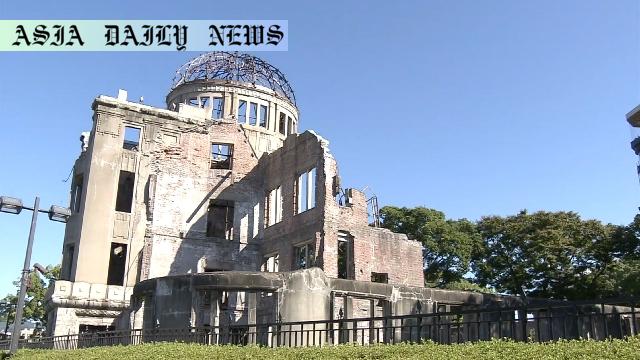hibakusha – The number of atomic bomb survivors in Japan has dropped below 100,000 as their average age climbs to 86.13 years.
- The number of hibakusha has dropped below 100,000, standing at 99,130.
- Survivors’ average age is now 86.13 years, reflecting an aging population.
- Hiroshima Prefecture houses the largest hibakusha population at 48,310.
- The decline underscores challenges in preserving accounts of the atomic bombings.

Falling Numbers of Hibakusha: A Sobering Reminder
The number of atomic bomb survivors (hibakusha) in Japan has dropped below the 100,000 mark for the first time since their certification began in 1957. According to the Ministry of Health and Welfare’s latest annual report, the number of living hibakusha stood at precisely 99,130 as of the end of March, representing a decline of 7,695 individuals from the previous year. These survivors had been exposed to radiation during the atomic bombings of Hiroshima and Nagasaki nearly eight decades ago. This steady decline is an inevitable result of aging, as the demographic’s average age has reached 86.13 years. The increasing difficulty of capturing firsthand experiences for posterity raises alarming concerns about the preservation of these vital historical accounts as direct witnesses grow older and fewer.
Regional Distribution of Atomic Bomb Survivors
The report also highlighted the geographic distribution of the hibakusha population. Hiroshima Prefecture remains home to the largest concentration, with 48,310 survivors residing there. Similarly, 23,543 individuals live in Nagasaki Prefecture, reflecting the epicenter of the nuclear devastation. Other regions include Fukuoka Prefecture (3,957 survivors), Tokyo (3,307 survivors), and Osaka Prefecture (3,186 survivors). These statistics not only reflect the areas directly impacted but also the subsequent migratory patterns of survivors and their families. Despite variances in population totals by region, every figure points to a shared urgency for immediate action to safeguard their stories and pass them on to future generations.
Preserving the Legacy Amid Challenges
The dwindling number of hibakusha raises concerns about the preservation of their accounts, which are crucial for educating the world about the devastating impact of nuclear warfare. Since most survivors are now in their late 80s, maintaining detailed records of their experiences has become paramount. Oral testimonies, written memoirs, and artistic expressions have been avenues through which hibakusha voices remain alive. Organizations, both local and global, have taken steps to archive these narratives effectively, including the creation of digital repositories. However, without the continued presence of survivors, the emotional weight of firsthand accounts might be lost. The decline also underscores the need for younger advocates to carry forward campaigns against nuclear weapons, ensuring that the hibakusha legacy lives on, even as their numbers dwindle.
The Moral Imperative for Nuclear Abolition
The decline in the hibakusha population is more than just a demographic statistic; it is a reflective moment for the global community regarding nuclear disarmament. The voices of hibakusha have long been a moral cornerstone in the fight against the proliferation of nuclear weapons. Their continued advocacy for a world free of such destruction has been instrumental in driving international discourse. As their numbers shrink, the global community faces the challenge of sustaining the momentum for nuclear abolition. This highlights the importance of multilateral treaties and educational efforts aimed at future generations that honor the sacrifices and testimonies of the hibakusha.



Commentary
A Stark Reminder of History’s Fragility
The news that the hibakusha population has fallen below 100,000 is both sobering and thought-provoking. These survivors represent a critical link to one of the most devastating chapters in human history, and their dwindling numbers serve as an urgent reminder of the fragility of firsthand historical accounts. With an average age of 86.13 years, these individuals are nearing the end of their lives, raising an imperative for society to act swiftly in preserving their invaluable stories. Without their presence, the living embodiment of nuclear warfare’s horrors risks becoming just another chapter in history books, devoid of the emotional gravity only direct testimony can deliver.
The Importance of Intergenerational Responsibility
As the population of hibakusha declines, the responsibility to keep their message alive and vibrant increasingly shifts to younger generations. This is no small task. The hibakusha have long been active proponents of nuclear abolition, offering their own traumatic experiences as evidence of the urgent need for global disarmament. Transitioning this moral torch to a new generation requires not just education but also inspiration, empathy, and a global commitment to understanding the magnitude of nuclear warfare’s human cost. Educational institutions and governments must collaborate to embed these lessons in formal curricula to ensure that the hibakusha message does not fade into obscurity.
Moving Toward a World Without Nuclear Weapons
Finally, the decline in hibakusha numbers underlines the urgency of global nuclear disarmament. Their lives stand as a testament to the human cost of nuclear conflict, yet international progress on disarmament remains halting at best. The hibakusha’s stories transcend national borders, serving as pleas to humanity to reject the notion of war at such a devastating scale. As these voices grow quieter, the onus on international communities and activists to uphold their legacy becomes not only an act of remembrance but also a moral responsibility to future generations. By ensuring their stories live on, we honor not just the hibakusha but also the cause for which they have fought for decades.